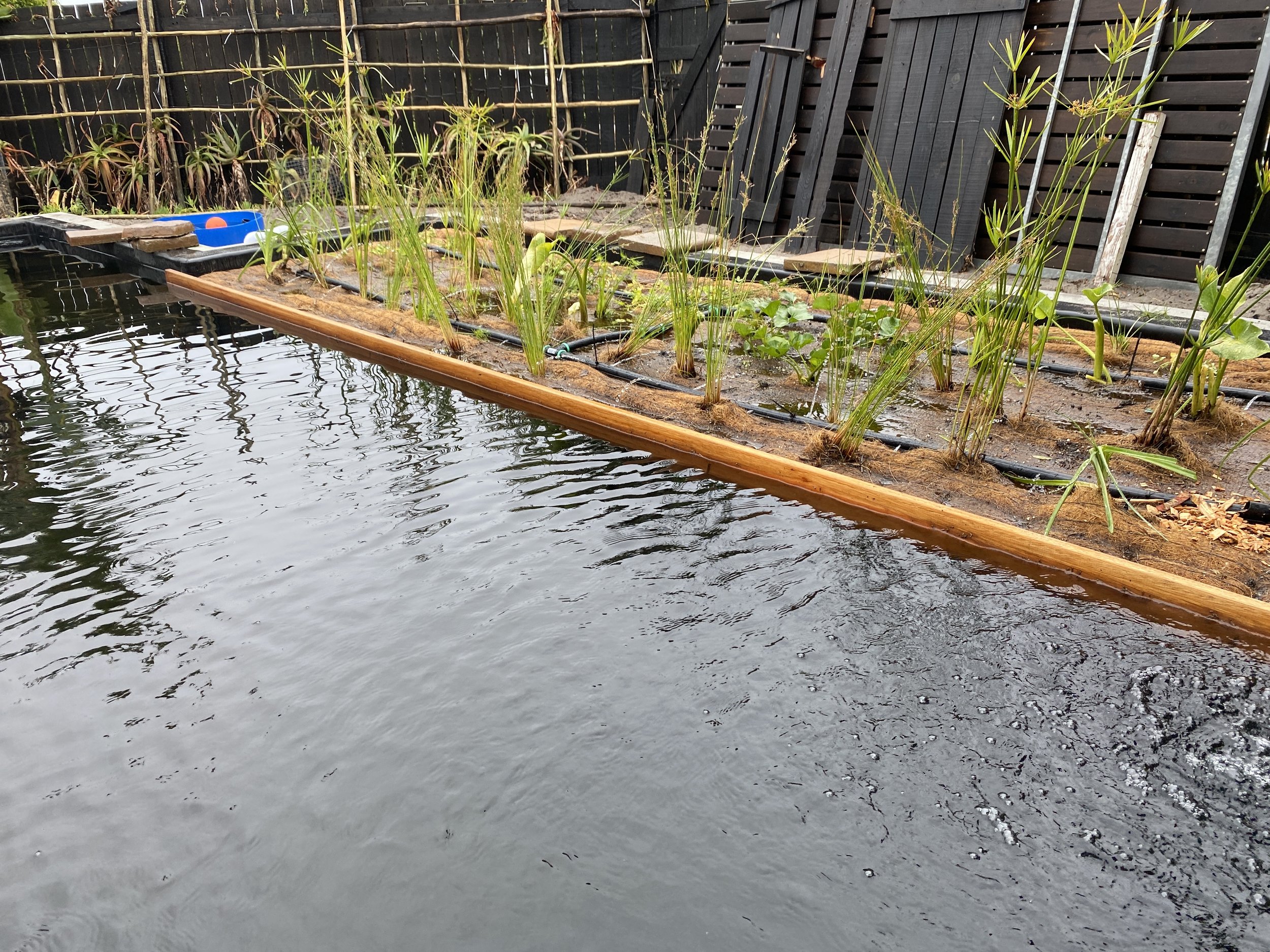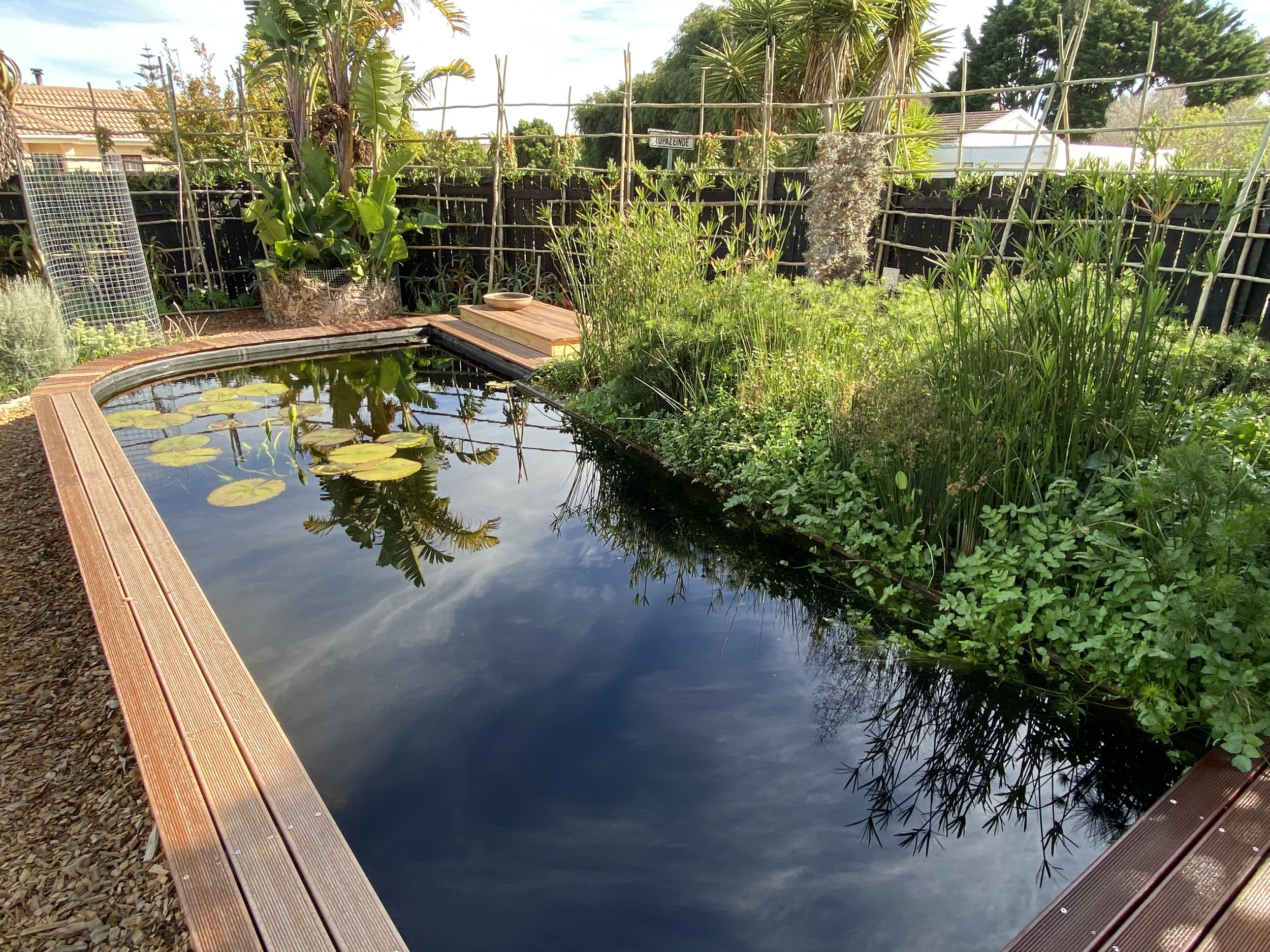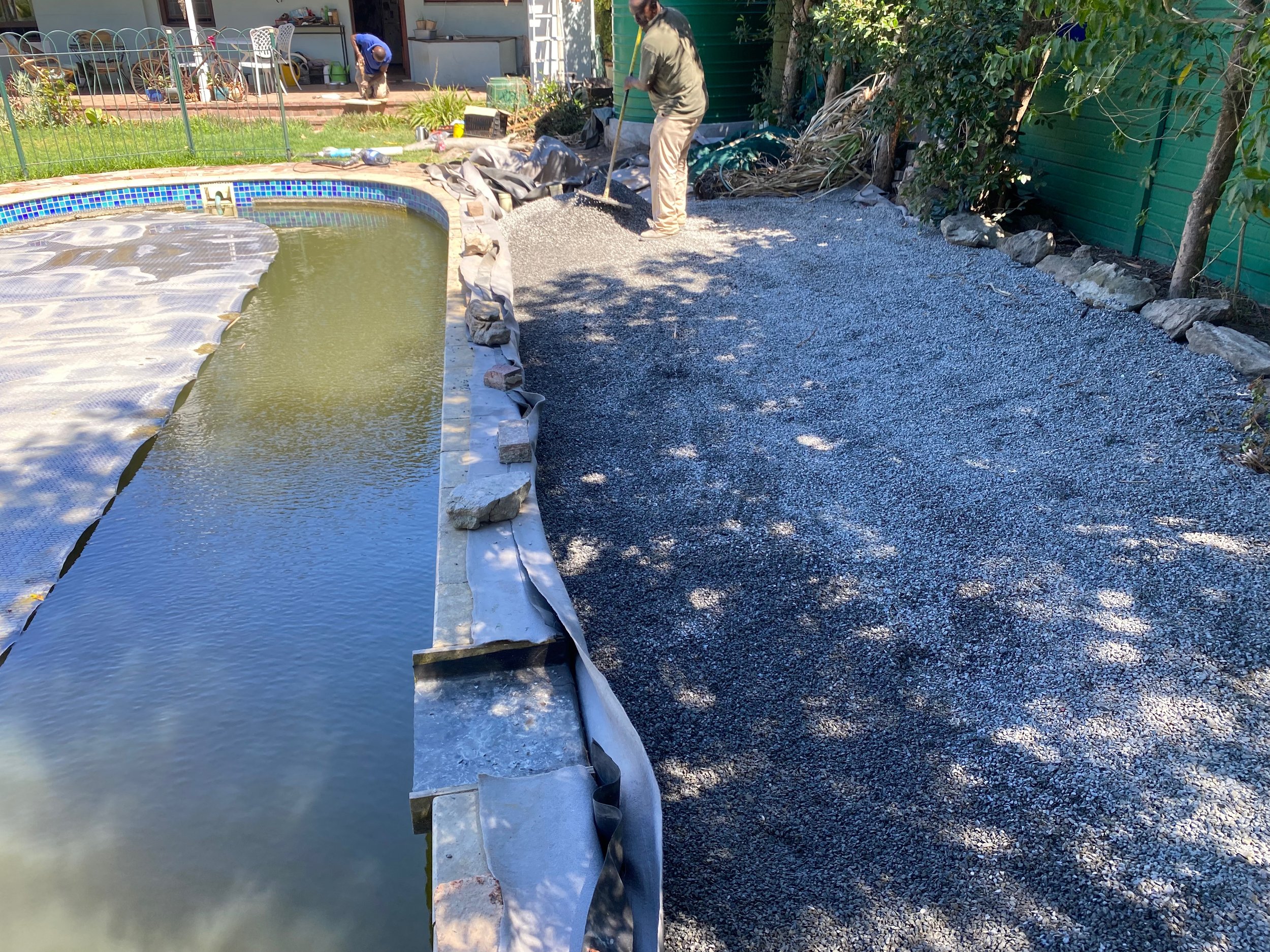
Natural Pool Conversions
When converting an existing chlorine pool to a natural pool one essentially has 2 options, you can either create a cost-effective floating wetland inside the pool OR you can construct a permanent gravel wetland inside and/or outside the pool.
The 2 Options Compared
Floating Wetlands
A floating wetland (as the name suggests) is a floating structure about 150mm thick that can be used as a planting medium for aquatic plants. In time the plant’s roots grow 1 meter deep underneath the structure and this is where all the biological filtration happens. Floating wetlands utilize just the plant’s roots to create a biofilm matrix that cleans the water. 35% of the pool’s surface area needs to be allocated to the floating wetland.
PROS
Very cost-effective
Can be removed in future if required
Can utilize existing plumbing and pumps
Can be easily shaped or moulded to the sides or borders of pool
Low environmental impact (less cement, gravel etc.)
Water level can vary. This is important if you don’t plan to top the pool up in summer
You can retain your current kreepy krawley and sand-filter to keep the pool floor clean
Often the water in the pool can remain throughout the conversion
CONS
Takes longer to establish. It needs a one good growing season to mature and the pool will only reach a stable and clear state after that time.
No option but to lose 35% of the pool surface area
You will never get quite the same design freedom or aesthetic beauty as you do with a permanent wetland
AVERAGE COST R15 000 - R50 000
The costs are much lower as one can literally install the floating wetlands with the water in the pool. You can retain the same plumbing, sand filter and kreepy krawley. It is advised to put a low-energy pump in to circulate the water 24/7 and this can be done relatively simply.
Gravel Wetlands
A gravel wetland can be added to any pool to convert it into a natural pool. This however requires the pool to be drained and for a retaining wall to be built to house the wetland and all the associated plumbing for the wetland. A wetland can be built inside or outside of the existing pool.
PROS
Looks better / has more gravitas
Allows for more custom design & hardscaping in the pool
A wider variety of plants can be grown
Safer for children (as they cannot swim underneath any floating structures)
You have the option to create a wetland outside of the pool swimming area thereby keeping all the surface area for swimming
CONS
Costs are much higher
Needs to be auto-topped up to maintain the exact water level
The pool has to be emptied and refilled
AVERAGE COST R80 000 - R400 000
The costs are much higher as one has to build permanent structures to hold gravel as well as redo all the plumbing, replace the pump, put in a pre-filter etc.
The cost will vary depending on whether a pool needs repair, how large it is, and how ambitious the remodel is when it comes to decking, jetties, wetlands outside the pool, retaining structures etc.
Examples of Floating Wetlands
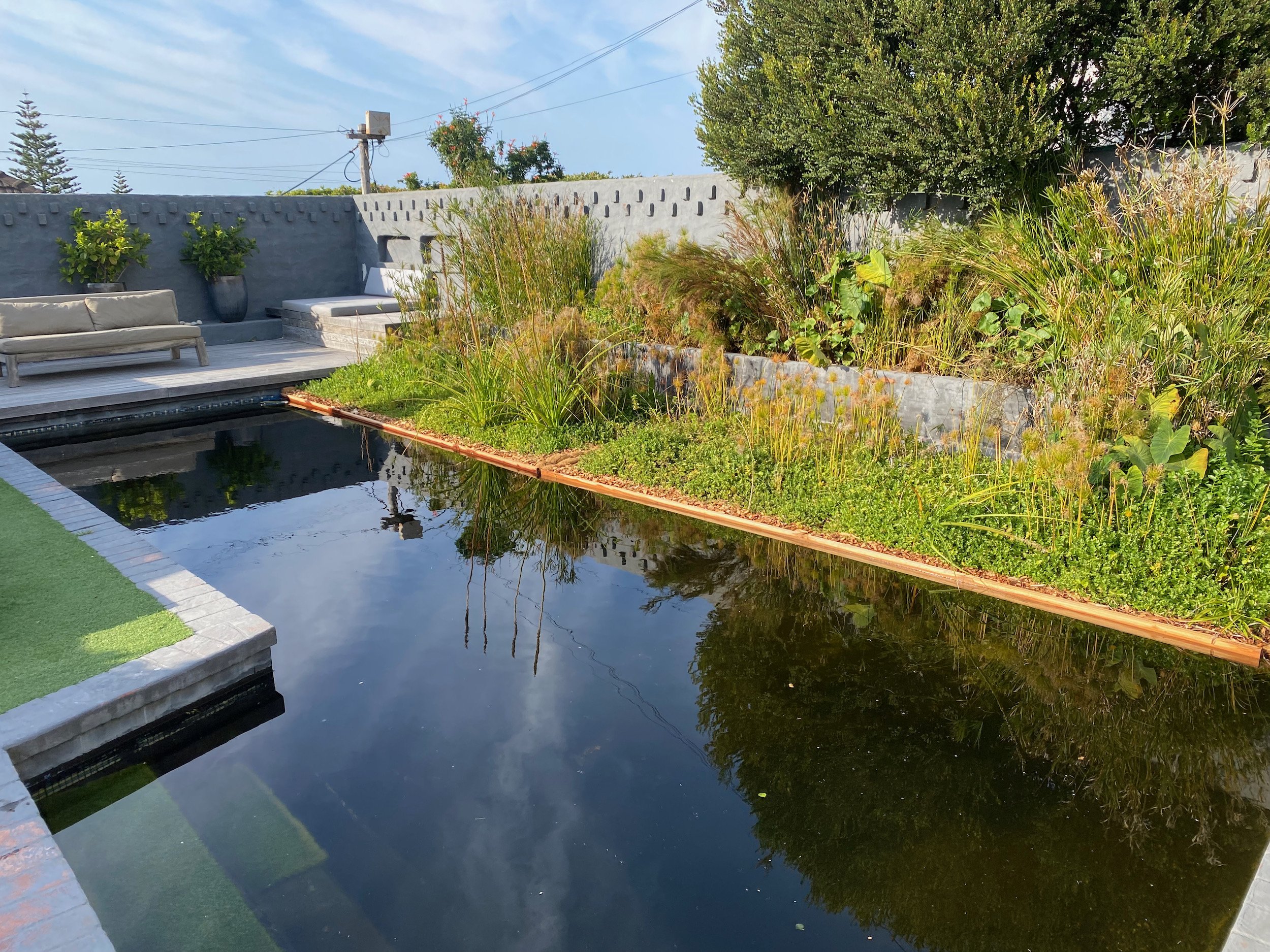
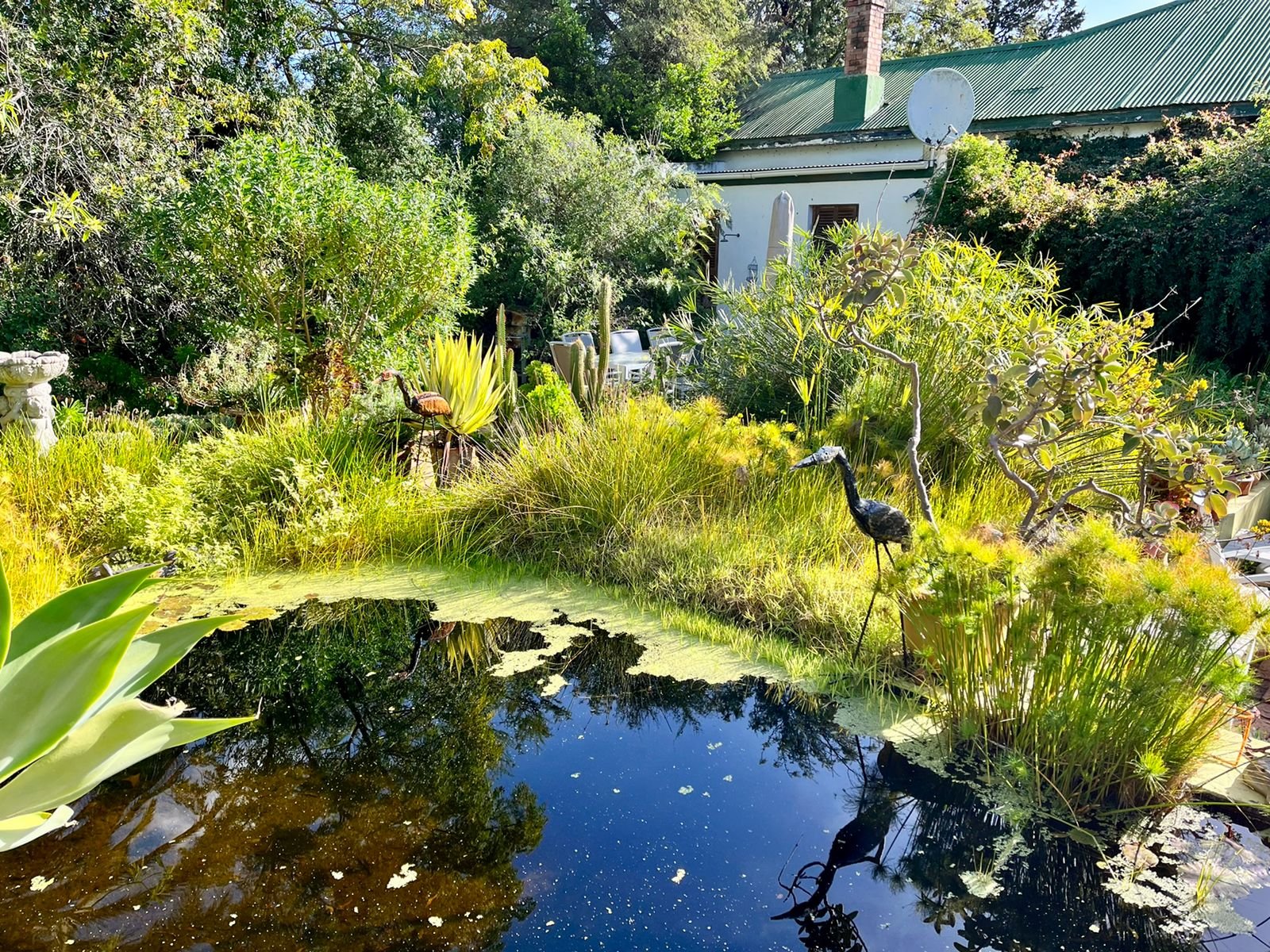
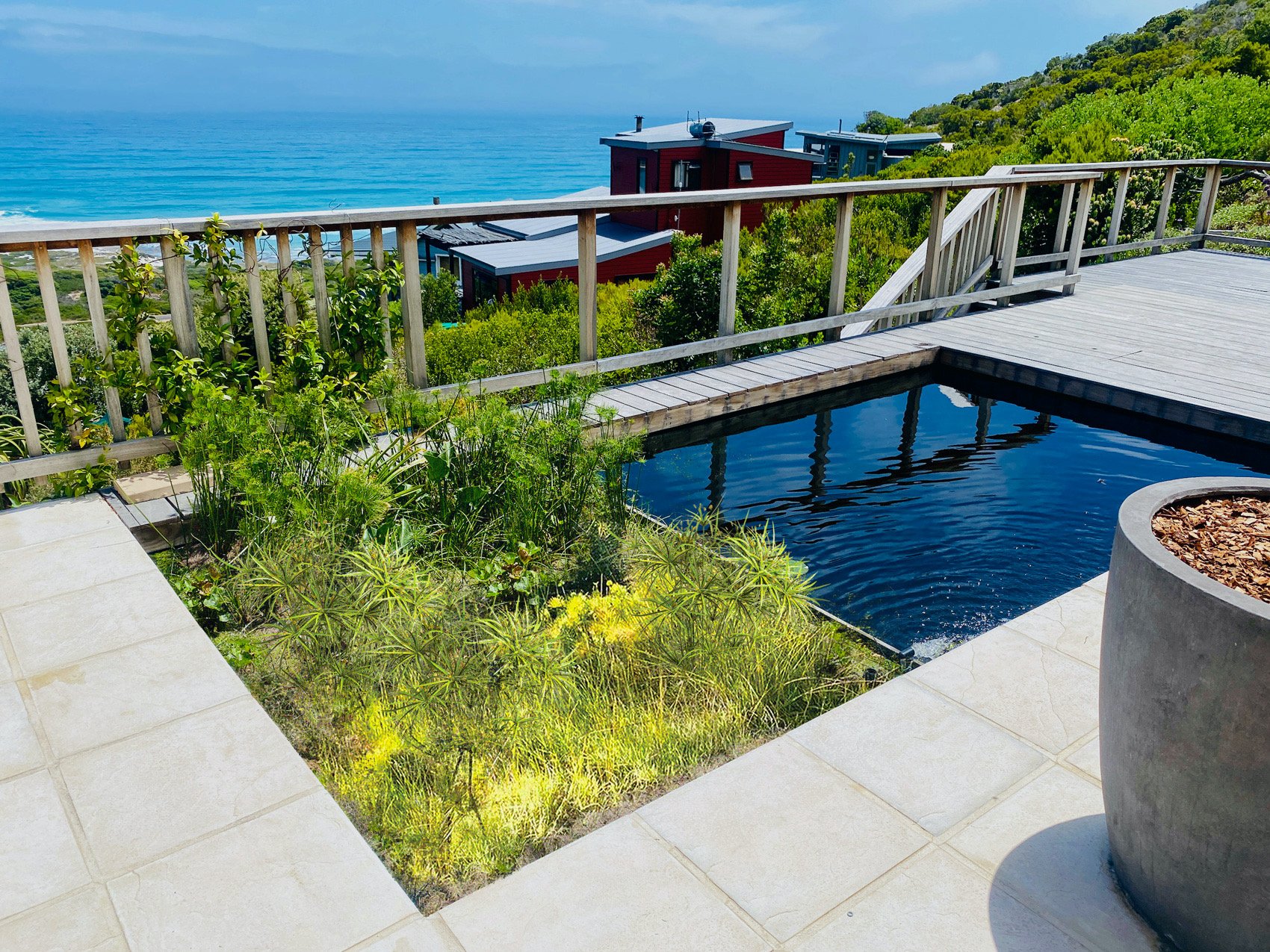
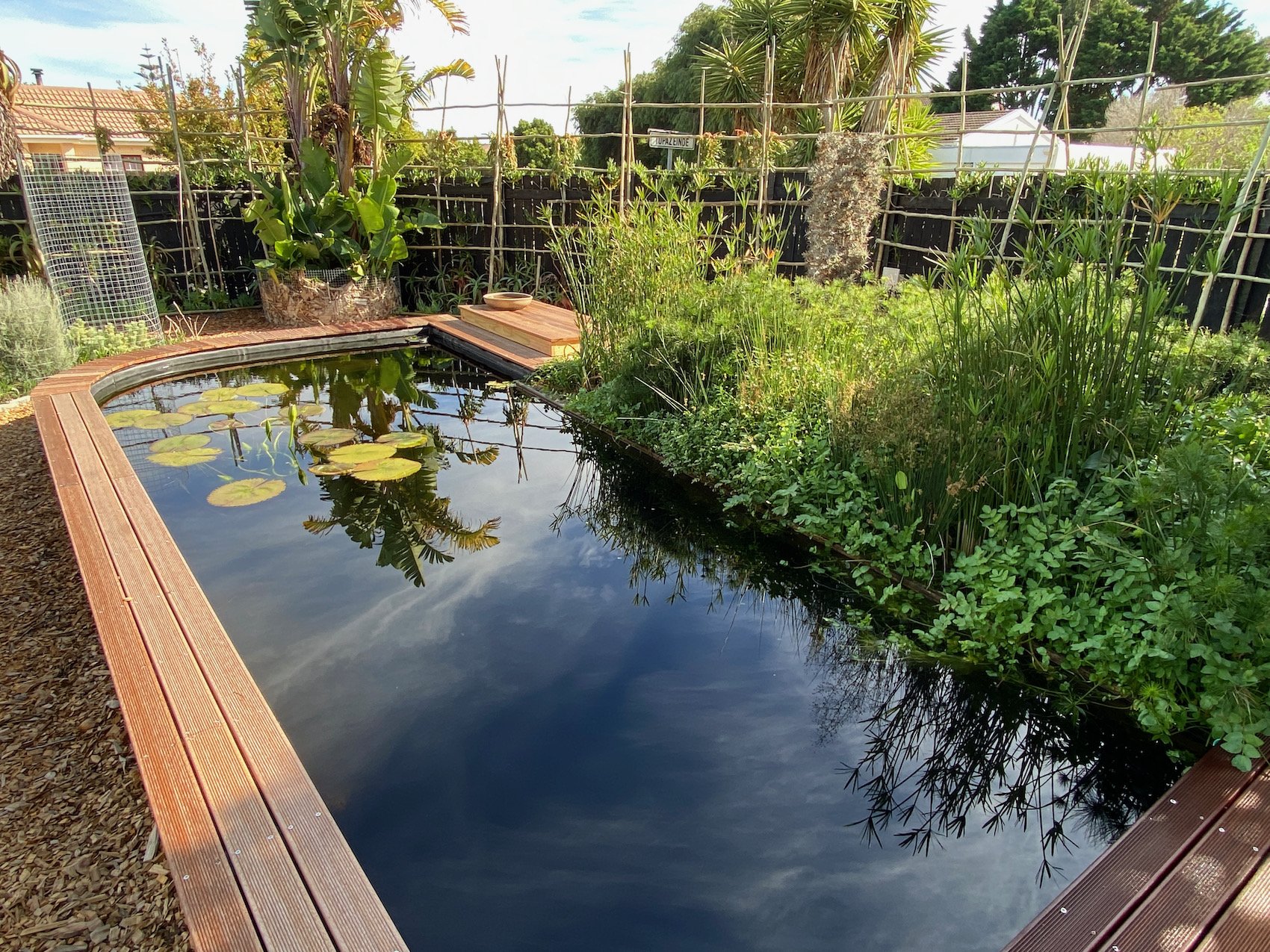
FLOATING WETLANDSBefore and After
Floating wetlands are carefully inoculated with a patented blend of microbes and slow-release fertilizer in order to get good plant growth after one growing season.
Gravel Wetland Examples
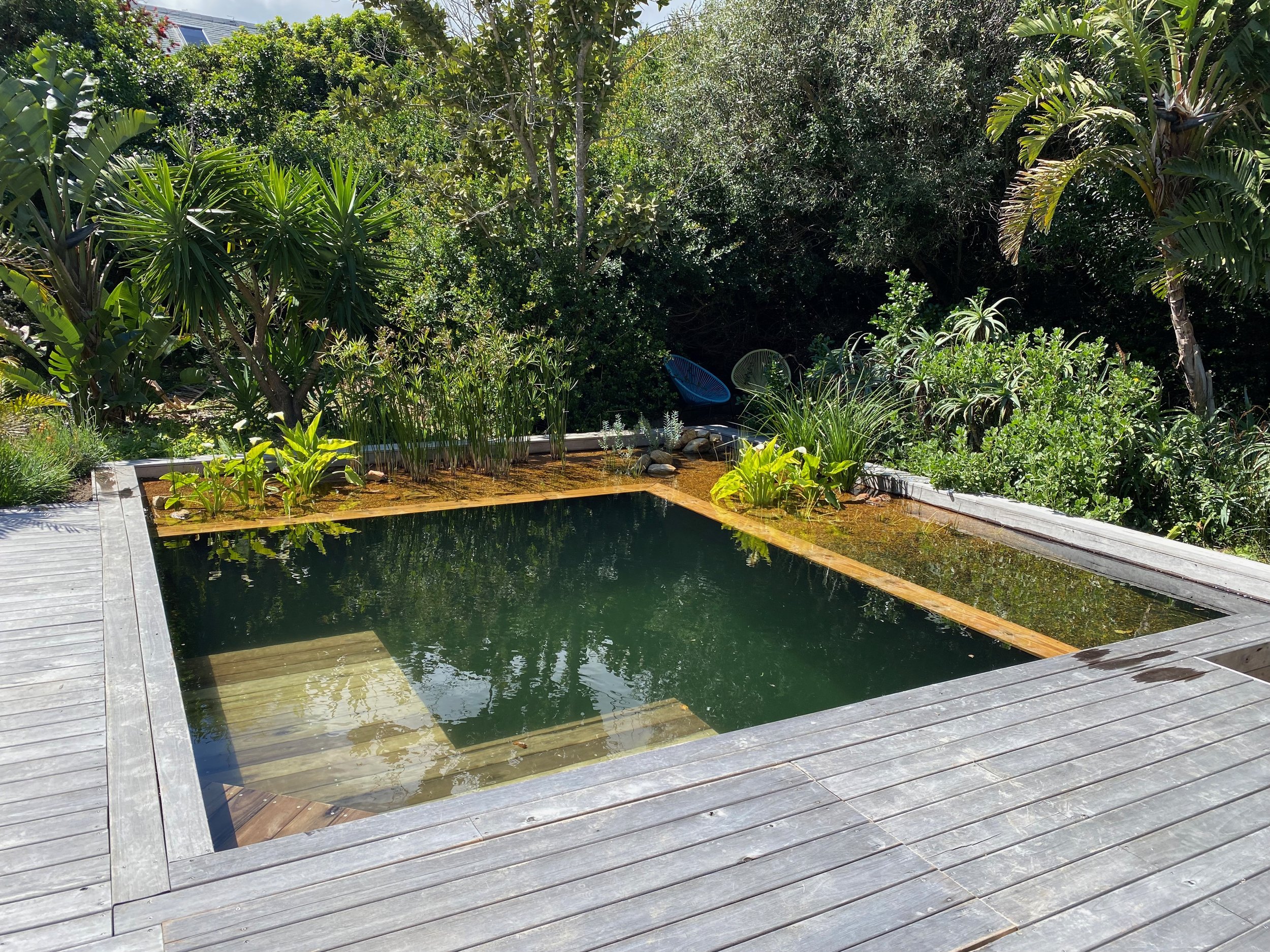


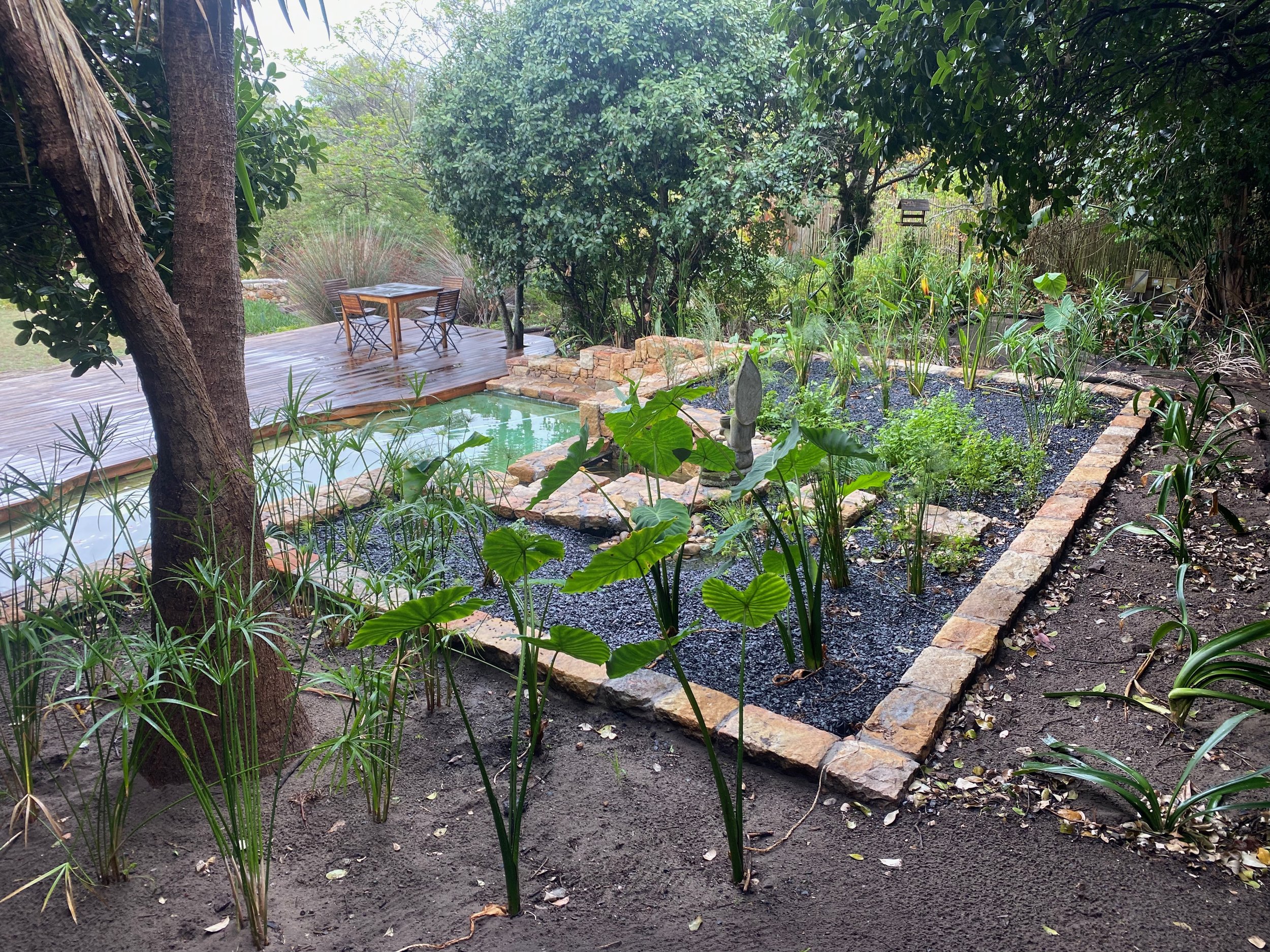

GRAVEL WETLANDSIt can be simple
One can excavate right next to the pool and create a gravel wetland just using an EPDM liner. No concrete, no building… just liner, gravel, plumbing, and plants. This is the simplest and most cost-effective means to convert a pool using a gravel wetland. It is advisable to add a low-power pump running 24/7. The major downside of this approach is that you can’t make the wetland and the pool one waterbody. You have to keep a dividing wall between the two.
Average Cost R70 000 - R110 000
GRAVEL WETLANDSand it can be elaborate…
If the pool is big enough you can build a gravel wetland inside the pool. This can be done with bricks or timber. If a wetland is built outside the pool you can make the entire wetland and pool one waterbody with a submerged wall in between but this does then require the whole pool and wetland to be waterproofed as one, which often means re-waterproofing the whole pool and wetland addition as one.
Average Cost R200 000 - R400 000
The sky is the limit with a gravel wetland conversion. Stone cladding can be used to create something really beautiful with the addition of a deeper pond area and spillways.
Average Cost R200 000 - R400 000



